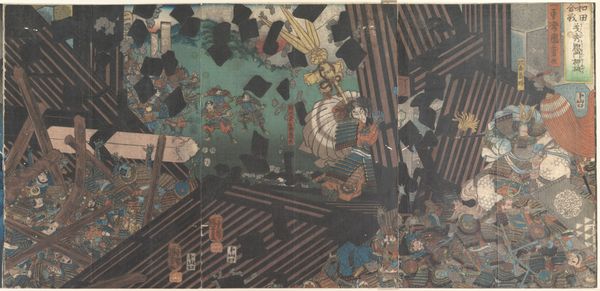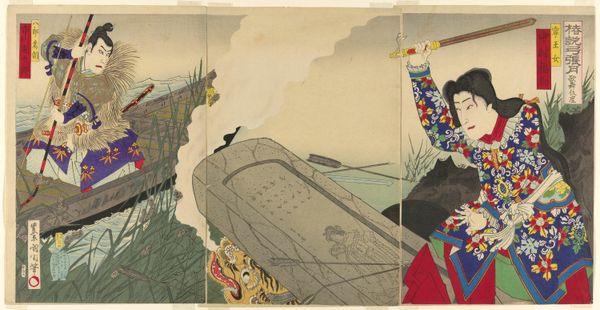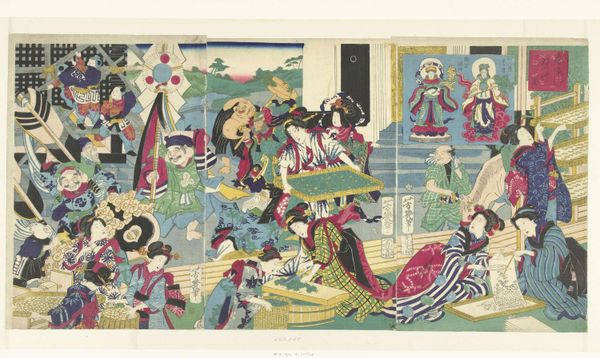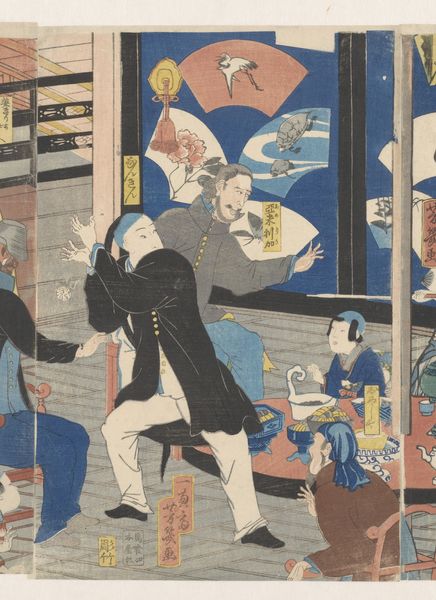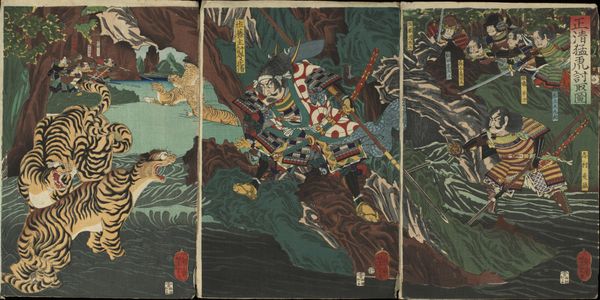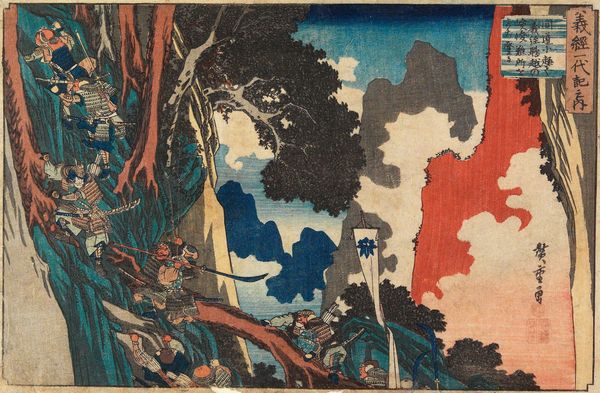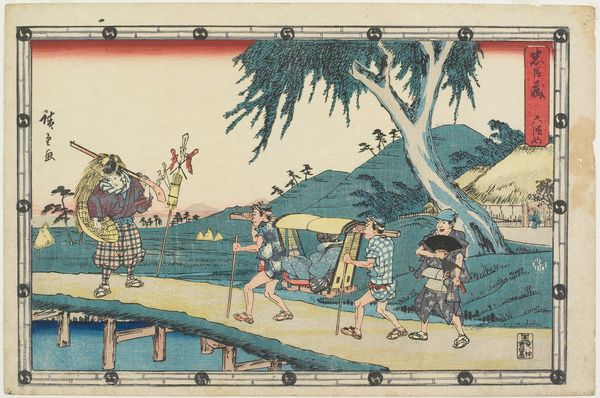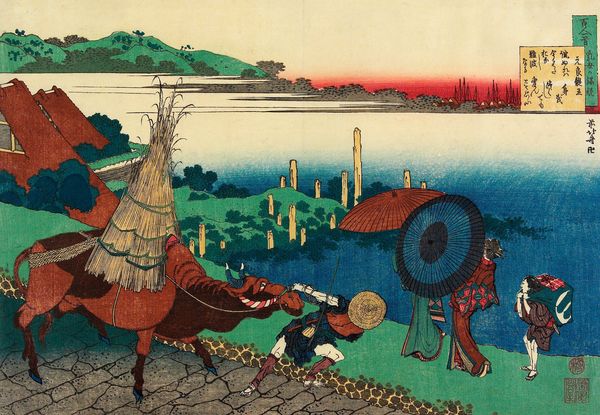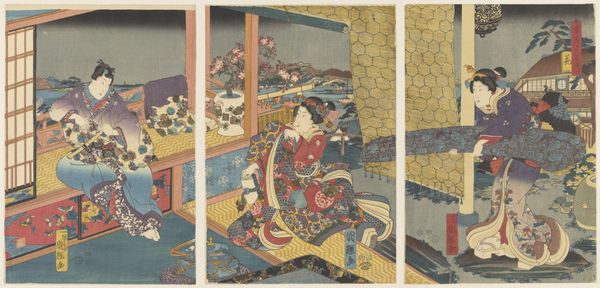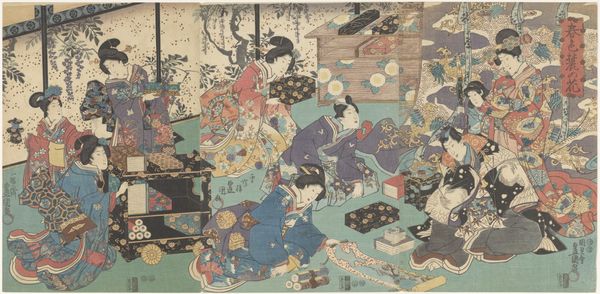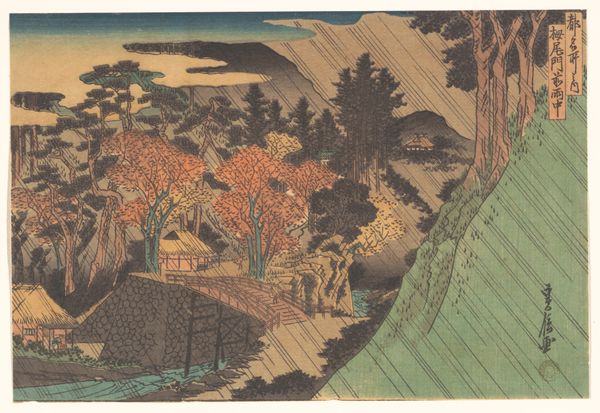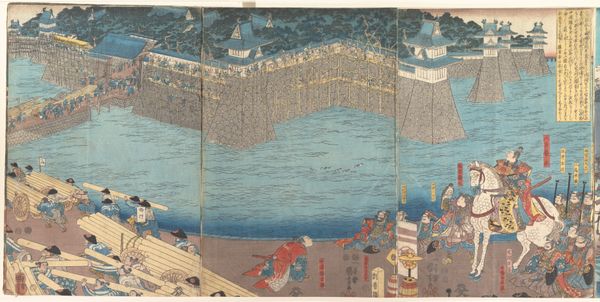
One of Fifteen Triptychs of Famous Battlescenes 19th century
0:00
0:00
print, woodblock-print
#
water colours
#
narrative-art
# print
#
asian-art
#
ukiyo-e
#
japan
#
figuration
#
woodblock-print
#
line
#
history-painting
Dimensions: Each print: 13 15/16 × 9 7/8 in. (35.4 × 25.1 cm)
Copyright: Public Domain
Curator: Look at this fascinating woodblock print by Utagawa Kuniyoshi. It's one panel of "One of Fifteen Triptychs of Famous Battlescenes," created in the 19th century. The work unfolds as a triptych, narrating a scene of intense historical conflict. Editor: My first impression is of a frenetic energy, all sharp lines and clashing colors. There’s something almost hallucinatory about the scene, the way the figures and the landscape seem to vibrate with motion and intensity. Curator: The imagery, I think, leans heavily on established visual symbolism. We see the iconic samurai figures rendered in striking detail, each bearing distinct emblems of their clan affiliation. The spears, swords, and even the water currents, seem to suggest an adherence to familiar archetypes. Editor: Right, it reads like a collection of coded gestures. For instance, those beams of light slicing across the composition–are they some form of divine intervention or more like battlefield markers, do you think? And how might that interpretation play into our understanding of power structures at the time? Curator: That’s an astute observation. It is worth investigating the conventions surrounding warfare imagery in Japanese culture and also think of its possible contemporary impact. Battle scenes of this kind helped propagate narratives of power and legitimacy. What ideological positions were really being represented through such heroic portrayals, particularly concerning class and gender? Editor: I’m also drawn to the peculiar details. The textures are quite compelling, and how space is rendered. But I can't help wonder, what story is this image really telling? Curator: Well, this work provides a lens through which we can examine Japanese militaristic traditions but also look into the contemporary interpretations and perhaps even contestations. The visual narrative gives you a glimpse into social commentary. Editor: Absolutely, there’s a lot here about visual encoding of ideas and their power. What the image is doing, perhaps even more so than what it’s overtly showing, is where its significance lies.
Comments
No comments
Be the first to comment and join the conversation on the ultimate creative platform.
